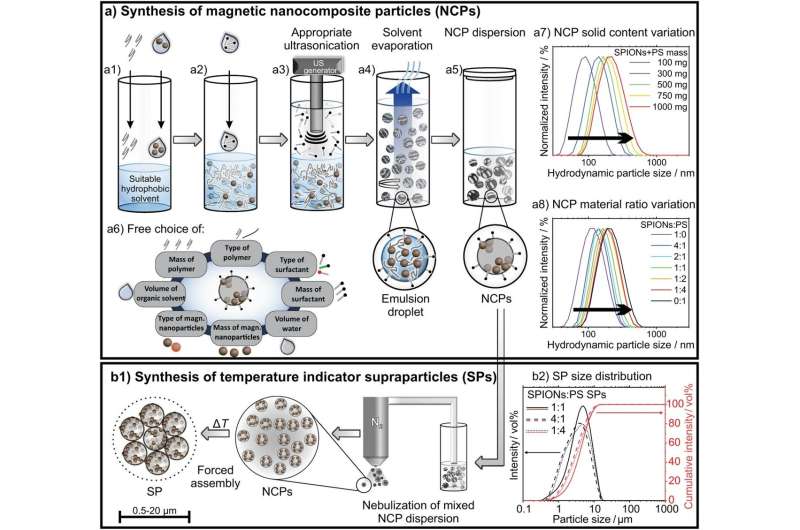Nano-rust: Smart additive for autonomous temperature control

The right temperature matters—whether in technical processes, for the quality of food and medicines, or the lifetime of electronic components and batteries. For this purpose, temperature indicators record (un)desired temperature increases that can be read out later. Researchers in the group led by Prof. Dr. Karl Mandel, professor of inorganic chemistry at FAU, have succeeded in developing a novel temperature indicator in the form of a micrometer-sized particle whose central component is rust. The results of the research have been published in the journal Advanced Materials.
The new temperature indicator has decisive advantages over previous indicators: its small size means it can be flexibly applied and the fact it is made of readily available materials makes it inexpensive to manufacture. What makes it truly outstanding, however, is the modular structure of the particles made of polymers and iron oxide as well as the magnetic readout process.
The modular design allows the indicator to be tailored for a specific application. The magnetic readout method allows the stored information of the temperature indicators to be read out even from the depths of a dark object or behind an opaque coating. This is not possible with many currently used indicators.
It is important to note that no real-time temperature monitoring is performed as with a thermometer. Instead, the temperature indicator stores the maximum temperature ever reached in the past, ranging from 40 to 170 °C. This is particularly suitable for tracing the temperature history of a material, which cannot be tracked with ordinary thermometers without a memory unit.
More information: Jakob Reichstein et al, Recording Temperature with Magnetic Supraparticles, Advanced Materials (2022). DOI: 10.1002/adma.202202683
Journal information: Advanced Materials
Provided by Friedrich–Alexander University Erlangen–Nurnberg




















